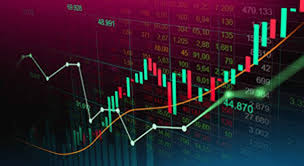
Trading gold in the Forex market can be an incredibly lucrative venture when approached with the right knowledge and strategies. Gold has always been seen as a safe haven asset, and its price tends to fluctuate based on various global economic indicators, sentiment, and geopolitical events. If you’re looking to enhance your trading skills, trading gold forex Platform Forex is a fantastic place to get started. In this article, we will explore the factors that influence gold prices, trading strategies, and essential tips for effective gold trading in the Forex market.
Understanding the Gold Market Dynamics
Before diving into trading strategies, it’s important to understand what drives the price of gold. Unlike stocks or other commodities, gold is not tied to a company’s performance. Instead, it is influenced by various macroeconomic factors:
- Inflation: Gold is often considered a hedge against inflation. When inflation rises, the value of paper currency decreases, leading investors to flock towards gold, driving its price up.
- Interest Rates: When interest rates are low, the opportunity cost of holding gold decreases, making it a more attractive investment. Conversely, rising interest rates can put downward pressure on gold prices.
- Geopolitical Events: Conflicts, elections, and economic instability can drive demand for gold as a safe haven asset, leading to price increases.
- Currency Strength: The strength of the U.S. dollar is inversely related to gold prices. A weaker dollar makes gold cheaper for foreign investors, increasing demand and pushing prices up.
Technical Analysis for Gold Trading
Technical analysis plays a crucial role in successful gold trading. Traders use charts and indicators to forecast future price movements based on historical data. Here are some common technical analysis tools used in gold trading:
- Moving Averages: Simple moving averages (SMA) and exponential moving averages (EMA) can help identify trends and potential reversal points.
- Relative Strength Index (RSI): This momentum oscillator helps traders evaluate whether gold is overbought or oversold, providing signals for potential entry and exit points.
- Fibonacci Retracement: This tool can assist in identifying key support and resistance levels by plotting horizontal lines at Fibonacci levels between high and low prices.
- Bollinger Bands: These bands can help identify volatility and potential price breakouts or reversals by analyzing price movement around a moving average.
Fundamental Analysis in Gold Trading
While technical analysis focuses on charts and trends, fundamental analysis looks at the bigger picture. Key economic reports, central bank decisions, and global events can significantly impact gold prices. Paying attention to the following factors is essential:

- U.S. Economic Data: Reports on employment, GDP growth, and consumer spending can influence the dollar’s strength and, consequently, gold prices.
- Central Bank Policies: The actions of central banks, particularly the U.S. Federal Reserve, can have significant impacts on gold prices. Interest rate changes or quantitative easing policies can lead traders to adjust their gold positions.
- Global Economic Events: Economic troubles in one country can lead to increased demand for safe-haven assets like gold globally.
- Jewelry and Industrial Demand: Gold’s demand in industries such as jewelry manufacturing and electronics can also influence its price. Tracking trends in these sectors can provide valuable insights.
Trading Strategies for Gold in Forex
Now that we’ve covered some essential factors, let’s look at practical trading strategies for gold:
- Scalping: This short-term strategy involves making small profits from numerous trades over a short time. Traders should monitor gold’s price volatility to maximize gains through rapid transactions.
- Day Trading: Day traders buy and sell gold within a single trading day, avoiding overnight risks. This strategy requires constant monitoring of market movements and quick decision-making.
- Swing Trading: This medium-term strategy aims to capture price swings by holding positions over several days or weeks. Swing traders generally combine technical and fundamental analysis for their trades.
- Position Trading: Long-term investors, or position traders, hold onto their gold investments for months or years, depending on overall market trends and economic forecasts.
Risk Management in Gold Trading
Every trader knows that risk management is essential for long-term success. Here are some strategies to manage your risk while trading gold:
- Set Stop-Loss Orders: These orders allow you to limit your losses by automatically selling your position at a predetermined price if the market moves against you.
- Position Sizing: Determine how much of your trading capital you’re willing to risk on a single trade. Maintaining small position sizes can help protect your capital during drawdowns.
- Diversification: Don’t put all your eggs in one basket. Spread your investments across various assets to enhance risk management.
- Stay Informed: Keeping up with global economic news, central bank announcements, and market trends can help you make well-informed trading decisions.
Conclusion
Trading gold in the Forex market can be highly rewarding if approached with the right knowledge and strategies. By understanding the dynamics of the gold market, employing effective technical and fundamental analysis, and implementing sound risk management practices, traders can enhance their chances of success. Whether you are a novice trader or an experienced investor, ongoing education and adaptation to market changes are key to mastering gold trading in the ever-evolving Forex landscape. Remember to utilize resources like Platform Forex to support your trading journey.